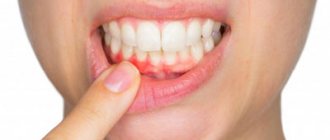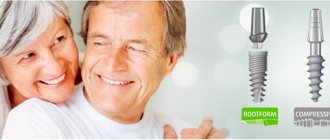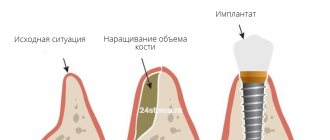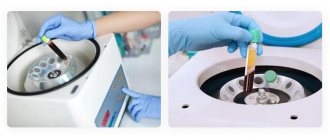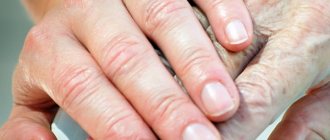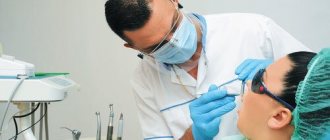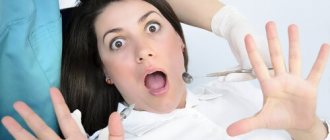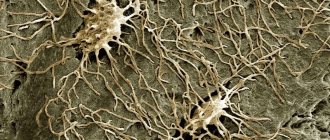NBR is one of the methods of bone augmentation before implantation. Surgery is used to guarantee the primary stability of the implant and eliminate the risk of rejection of the titanium root and the development of tissue inflammation. The lack of bone is filled with a bone substitute, which is secured with a membrane. They use their own or synthetic materials. The method is safe: surgery is performed under local anesthesia, small tissue incisions are made, bone material is grafted, and the process of graft engraftment is monitored.
What is Guided Bone Regeneration
Guided bone regeneration is an operation to compensate for the lack of bone tissue with a substitute, which is secured with a barrier membrane. After the procedure, a framework is formed around the transplant (it is formed by vessels and osteocyte cells that produce new tissue). Natural bone is gradually replacing artificial material.
Extensions using the NDT method are carried out according to classical parameters:
- thickness of the vestibular bone wall (at the cheek) - up to 2-2.5 mm;
- bone thickness between the implant and the root of the adjacent unit - up to 2.5-3 mm;
- The thickness of the bone wall between two titanium roots is up to 3 mm.
Frequently Asked Questions About Bone Augmentation
What are the indications for the sinus lift procedure?
Increasing the volume of bone tissue is indicated if the bottom of the maxillary sinus is located very low in relation to the oral cavity, and there is not enough bone volume to install the implant. Another situation is the loss of bone tissue after tooth extraction, which is due to the lack of chewing load on this area.
Is bone tissue augmentation necessary for everyone who decides to install an implant?
Hello. Of course no. It all depends on each specific case. In general, a sinus lift is only done if the patient has weak or thinned bones. In other cases, this operation is avoided.
Why does bone deficiency occur in the first place?
The most common cause is natural atrophy (resorption) of the bone after tooth loss. Studies show that the bone atrophies most intensively in the first 2-4 months after tooth extraction.
Is it possible to avoid guided bone regeneration with dental implants?
If less than 3 consecutive teeth are missing, there is no alternative. The patient is forced to either undergo an osteoplasty procedure or refuse implantation in favor of removable prosthetics or the installation of a bridge.
Oral care after guided bone tissue regeneration?
Requires caution when brushing teeth and eating food. It is recommended to limit the consumption of foods that are too hard to prevent the possibility of dehiscence and limit physical activity.
How is bone volume restored?
To restore the volume of bone tissue in a very thin area at the site of the dental alveolus, bone is split and the cavity is filled with bone tissue (an auto-, allo-, or synthetic graft is used). Then, after bone regeneration is complete, the implant itself can be installed. When it is necessary to increase the height of the bone, simultaneously with the implantation, bone tissue is increased with a special preparation that replaces it. A membrane coating is applied on top. The alveolar bone with various extension designs should heal and strengthen within 4–6 months, after which an artificial tooth (ceramic or metal-ceramic crown) can be installed. To restore jaw bone tissue, an autogenous graft is used (bone is taken from the patient himself from another part of the jaw); allograft (donor bone is taken from another person) or synthetic materials that mimic bone (they contain calcium and phosphorus).
Is bone tissue restoration necessary for periodontitis and periodontal disease?
Restoration of bone tissue during periodontitis or periodontal disease is required when atrophy of the bone tissue of the alveolar processes of the jaws occurs.
In what cases is guided bone regeneration suitable?
The technique is suitable for cases where the bone tissue has an average and minor degree of damage, both in width and height. Simultaneous installation of implants is allowed. The advantage of the technology is that there is no need to transplant a bone block.
Why does bone tissue atrophy after tooth extraction?
The problem of lack of bone tissue often arises when there is a long absence of chewing load on the area after tooth extraction. Also, sinus lift surgery is indicated when the maxillary sinus is too low to the oral cavity, and there is not enough bone tissue to install the implant.
Indications
The operation allows you to increase the “necessary” volume for high-quality classical implantation, helps restore the functions of the jaw, and returns the gums to an attractive appearance.
The bone is built up “with reserve”, since after the operation the surface layers will be supplied with a small amount of oxygen due to their lower blood circulation. Therefore, the volume of inevitable tissue resorption is calculated.
In addition to implantation, indications for NRC are:
- rapid restoration of physiological parameters after tooth extraction;
- congenital or acquired defects of the bone around the teeth;
- prevention of tooth displacement, loosening, and loss due to periodontal tissue diseases.
Why does atrophy occur?
What bone materials are used
Osteoplasty involves the use of bone replacement materials. Previously, transplants were used that were not widely used due to frequent rejection of foreign material:
- Allografts
are donated bone from other people. The material was obtained from corpses, processed, sterilized, and stored in bone tissue banks. - Xenografts
are animal bones (cattle, pigs). The material was freed from proteins by heating (to eliminate the possibility of an allergic reaction after transplantation).
We do not use outdated techniques. Nowadays, many synthetic components have been developed that promote the growth of our own bone, which we use to build bone tissue.
Synthetic materials have a high degree of affinity and compatibility with natural bone and are its analogues. These are granular formulations based on:
- calcium phosphates;
- chondroitin sulfate;
- bioglass.
The effectiveness and safety of artificial materials has been confirmed by numerous studies. They are easy to use, take root well, promote the regeneration of your own bone, and are hypoallergenic.
With osteoplasty, a combination of an artificial substitute and a person’s own bone in the form of chips (autograft) is possible. The technique helps preserve the volume of built-up bone tissue and speed up the rate of recovery. The same method helps if you have to grow a large amount of tissue.
If there is a slight shortage, you can only get by with synthetic materials.
Reducing the incidence of complications in patients with mandibular fractures and shortening the duration of their disability is a serious medical and social task, the solution of which is closely related to reparative bone regeneration. This process depends on genetic and epigenetic factors.
It is known that the rate of tissue regeneration is genetically very strictly limited within small limits, measured in hours and even minutes. Thus, the synthesis of a collagen molecule requires from 4 to 11 hours. If the assembly of the molecule lasts <4 hours, it will be incomplete. Such a molecule either will not leave the cell and will be dismantled within it, or will be immediately destroyed as soon as it appears in the extracellular space by tissue proteases. At the current level of development of science, it is impossible to go beyond the limits allowed by the genotype. Therefore, there is no point in setting the obviously impossible task of influencing it in order to accelerate regeneration.
It’s another matter if we influence the epigenetic component, trying to create ideal conditions for metabolic processes in the cell. This will allow the cell to synthesize the necessary substances in the shortest possible time, inherent in the genotype. The epigenetic factor is made up of many components: hormonal levels, the provision of cells with building materials, vitamins, oxygen, the intensity of bone resorption, the strength of immobilization of fragments, etc. The epigenetic component is very variable and quite accessible to influence. Consequently, the task of creating an epigenetic component that would contribute to the maximum realization of genetic potential can be considered justified and realistic.
In essence, this is a problem that we have been trying to solve for many generations. The complexity of its solution is due to the fact that there is a lack of knowledge on a number of key points: 1) all components of the epigenetic factor are still unknown; 2) the genetic program itself is not identical in different individuals; 3) different tissues have different genetic programs; 4) the optimum of the epigenetic component is unknown throughout the entire period of consolidation of fragments.
Callus formation is a combination of growth and development processes that are known to be mutually exclusive [4]. In callus, both processes occur simultaneously, but in different cell populations, and at each specific moment one or another process predominates and each of them has its own epigenetic component, the components of which are designed to optimize each stage of the regeneration process.
It is impossible to perfectly optimize all stages of regeneration. One can only try to create an optimum for that stage of regeneration in which the maximum of structures is located at a given specific time. In our opinion, the existing practice of prescribing 1-2 osteogenesis stimulators (hormone, vitamin, methyluracil - MU, etc.) for the entire period of healing of a broken bone should be abandoned as inappropriate, or even simply harmful.
The positive results obtained by individual researchers from the use of a particular drug are explained by the fact that at some point the use of this drug coincides with the corresponding phase of regeneration. The best results are limited to a dubious reduction in the period of disability - a maximum of 1 week.
Thus, non-staged treatment should be abandoned as unjustified. There is a need for targeted development of staged treatment regimens, the success of which depends on knowledge of the extent and sequence of stages of reparative bone regeneration.
Literature data and our experience allow us to distinguish 5 stages of reparative bone regeneration [1, 3, 7]: Stage I - 1-2 days after the fracture - destructive-resorptive; Stage II - 3-8 days - a combination of degenerative-inflammatory and proliferative stages; Stage III - 9-14 days - synthetic stage; Stage IV - 15-21 days - remodeling stage; Stage V - 22-28 days - the stage of callus maturation.
Research in recent years has shown a direct dependence of the intensity of regeneration on I, the starting stage - destructive-resorptive [2, 6]. Constant, precisely dosed microdestruction of bone, which lies, in particular, at the basis of compression-distraction osteogenesis, makes it possible to prolong this stage for as long as desired, maintain the process of reparative regeneration at a very high level for a long time, and bloodlessly replace large bone tissue defects [10].
When a bone is fractured, an inflammatory reaction occurs, the first participants of which are neutrophilic leukocytes. Already at the end of the 2nd day, during the breakdown of these cells, choline and other mediators are released, which lead to the transformation of monocytes into macrophages. These cells not only cleanse the wound of necrotic tissue, decaying neutrophils, and bacterial decay products, but also synthesize a large number of cytokines (transforming growth factor-β, bone morphogenetic protein, insulin-like growth factor, fibroblast growth factor, vascular endothelial growth factor, etc. ). It is generally accepted that the source and precursor of osteoclasts are macrophages, which “merge” into one giant multinucleated cell [13]. And this seems logical, since to clean a bone wound you need your own specific “cleaner,” which is precisely the osteoclast. Despite the abundance of cytokines, it is still unclear under the influence of which mediator macrophages turn into osteoclasts. The peculiarity of cytokines is that they act over a very short distance and on strictly defined target cells. An osteoclast is a giant cell that arises from the fusion of several dozen macrophages, which fits well into the philosophical category of the transition from quantity to quality. An osteoclast can resorb bone, which is impossible for a macrophage. In fact, the osteoclast is a bone macrophage - a “cleaner” of a bone wound.
There is a close relationship between the rate of bone resorption and formation. This process involves osteoblasts, skeletogenic stem and progenitor cells, which can differentiate along the osteogenic or chondrogenic pathway [8]. This differentiation depends on the degree of restoration of the microcirculatory network at the site of damage and the degree of tissue oxygenation [9, 11]. Mesenchymal cells, i.e. embryonic, capable of actively dividing and differentiating into different cells. The differentiation of all these cells is controlled and directed by fibroblast growth factor, insulin-like growth factor, etc. [12].
Our assumption that long-term maintenance of reparative regeneration in the stretch zone of young callus (distraction) at a high level is due not only to the activity of osteoblasts, but also to the quality of sanitation of the bone wound by osteoclasts, needs to be verified. For this purpose, experiments were carried out on rats, in which the effect of stimulation and inhibition of the first destructive-resorptive phase on the reparative regeneration of the lower jaw was studied.
Material and methods
The first experiment included 90 white outbred rats weighing 180-200 g, in which, under ether anesthesia, soft tissues in the right submandibular region were dissected, the lower jaw was skeletonized, and a fracture of the body of the lower jaw was made between the first and second molars with nail clippers. In an effort to create an open fracture, the mucous membrane was perforated, providing communication between the oral cavity and the site of the jaw fracture. The external wound was sutured. Immobilization was not performed, but the rats received soft, crushed, complete food. The parathyroid hormone plays an important role in the physiological control of bone tissue resorption, which determined the design of the experiments.
The rats were divided into 3 groups. Animals in group 1 (control) were injected with saline; in group 2, the destructive-resorptive phase was stimulated by intramuscular injection of parathyroid hormone (PTH) at a dose of 0.1 IU per 100 g of animal body weight in the first 3 days after the fracture; in group 3, the destructive-resorptive phase was inhibited at the same time by intraoral administration of MU at a dose of 2 mg per 100 g of body weight [5].
The 2nd experiment included 180 of the same animals with similar fractures of the lower jaw. The animals were divided into 9 groups of 20 per group depending on the drugs used. In the first 5 days after the mandibular fracture, they were administered retabolil, indomethacin, dexamethasone, testosterone, vitamin E, vitamin D3, vitamin A, PTH and calcitonin (CT). PTH (0.1 U/100 g) and KT (0.1 U/100 g) were administered intramuscularly daily. Dexamethasone (0.004 mg/100 g) and testosterone (0.01 mg/100 g) were injected subcutaneously daily. Retabolil (0.5 mg/100 g) was injected subcutaneously on days 1 and 5 after the fracture. Vitamin E (0.125 mg/100 g), vitamin D3 (100 ng/100 g), vitamin A (6 U/100 g) and indomethacin (0.03 mg/100 g) were administered into the oral cavity from a syringe daily. To injure the animals less, some of the drugs were given in the 1st half of the day, and some - in the 2nd half of the day. The results were assessed after 1 month by the number of complications and the strength of fusion of mandibular fragments. The strength of fragment fusion was assessed using an Instron 1122 machine. Only mandibles with normal consolidation of fragments were taken for analysis.
Results and discussion
As we expected, the use of PTH reduced the number of complications by 36%, and the use of MU increased it by almost the same amount (Table 1).
It should be noted that long-term use of MU (for 2 weeks) resulted in significantly fewer complications than in the control group, whose animals received placebo. This is explained by the fact that MU, having a negative effect on the first, resorptive stage, had a positive effect on one of the subsequent synthetic stages at a later date.
Statistical processing of the results showed that the strength of the fusion of fragments in animals receiving PTH was significantly higher than in animals receiving MU (see figure).
Figure 1. Effect of PTH and MU administration on the magnitude of maximum force (a) and total work (b) required to destroy the callus of the rat mandible. 1 - lower jaw of intact animals; 2 — lower jaw of untreated animals; 3 — lower jaw of animals after PTH injection; 4 — lower jaw of animals after the introduction of MU.
Thus, stimulation of I, the resorptive stage of reparative regeneration, not only reduced the number of complications, but also created optimal conditions for osteogenesis, which ensured a more durable fusion of fragments.
Based on information about the leading role of osteoinduction in reparative osteogenesis and on the results of our work on stimulation of the resorptive phase of osteogenesis caused by the release of osteoinducer proteins from injured bone, we studied the effect on the osteoinductive mechanism of a number of drugs that are osteotropic and used in clinical practice.
After processing the materials from the 2nd experiment, it was found that retabolil, dexamethasone, testosterone and vitamin E worsen the osteoinductive potential of the bone, contribute to the occurrence of traumatic osteomyelitis, slow down the fusion of fragments and, therefore, their use in the first days after injury is undesirable. The feasibility of using vitamin A and CT in the early stages after a fracture is questionable, since their effect is apparently mediated through the synthesis of osteoinductive factor, and this takes time. Therefore, they are indicated from the second third of the regenerative period, i.e. in the synthetic stage. But their use, like indomethacin, is at least harmless. PTH and active vitamin D3, calcitriol, gave good results (Table 2).
The study showed that it is necessary to develop criteria to identify the type of regeneration in a particular individual, i.e. establish the genetic potential of its regenerative ability. It is necessary to combine the efforts of clinicians and experimenters in order to determine the boundaries of the stages of reparative osteogenesis and develop methods for creating optimal conditions at each of them. Solving these problems is beyond the power of 1-2 groups; General coordination of efforts is necessary to develop fundamentally new tactics and strategies for treating patients with bone fractures.
Types of membranes
The membrane technique used by the surgeon is needed to isolate the space from fibrous tissue - creating conditions for normal tissue regeneration. There are several requirements for membranes:
- biological compatibility;
- strength;
- prevention of migration of epithelial cells;
- corresponding resorption period.
In practice, two types of membranes are used:
- Resorbable.
They dissolve on their own 6-24 weeks after extension. Membranes are used for small defects (when you need to build up no more than 2 mm) - they do not hold their shape as well as the next type. - Non-resorbable.
They do not dissolve - they are eliminated several months after surgery.
To quickly fuse the artificial material with the jaw bone tissue, in some cases membranes from the patient’s blood plasma are used.
NDT stages
The operation is performed under anesthesia. The surgeon acts according to the classical algorithm:
- He cuts the gum along the hole of the lost tooth, makes several cuts on the side - peels off the gum flap.
- Fixes the implant into the exposed bone (if the operation is organized simultaneously with implantation).
- Replaces the missing volume with a graft, covers it with a membrane with a protrusion of 2-3 mm beyond the bone material. If it does not exclude the fact that the membrane is being pressed into the defect, a titanium mesh is placed on top.
- Secures the membrane (with sutures or screws).
- Brings the edges of the wound together and applies stitches.
The operation lasts 1-1.5 hours.
Can it be done simultaneously with implantation?
Two operations are combined into one if the following conditions are met:
- the shape of the defect allows you to correctly install the artificial root in any of the planes;
- when installed, the implant is located within the bone contour (does not go beyond the tangent drawn to the bone line);
- eliminate a horizontal (not vertical) defect.
The implanted implant can become a barrier to the growth of blood vessels and inhibit the formation of new bone. If the implant protrudes beyond the contour of the bone tissue, the risk of developing fibrous tissue with inclusions of the implanted material cannot be ruled out.
Bone regeneration: how can you help it?
3K 4 min.
Bones form the basis of the musculoskeletal system. Under the strong protection of the bones are valuable structures of the body - the bone marrow, in which all blood and immune cells are formed throughout life, as well as the brain and spinal cord, which regulate all functions of the body.
Photo: flickr.com/Yussef
Photo: flickr.com/Yussef
Long evolution has created a perfect mechanism for the formation of bone tissue in our body - the mechanism of osteogenesis. It ensures both its constant renewal (physiological regeneration or so-called remodeling) and restoration after injury (reparative regeneration).
Bone can formally be called a composite material, which includes organic substances (the main protein-collagen) and inorganic substances (the main salts - calcium and phosphorus). Two main types of cells—bone-destroying cells (osteoclasts) and bone-forming cells (osteoblasts)—work throughout our lives to ensure bone turnover and repair after injury.
Biomineralization of proteins could be carried out by organisms more than 600 million years ago. Clam shells, sea urchin spines, and the exoskeleton of arthropods are the result of this process. The process of biomineralization of collagen during the formation of bone tissue (that is, its inlay with calcium salts, phosphorus and some trace elements) is evolutionarily ancient, on the one hand, and on the other, under the control of the nervous and humoral (through the blood with the help of biologically active substances and hormones) systems. In addition, in bone tissue and bone marrow there is a deep reserve of the body - the central depot of stem cells, which replace aged or dead cells in many organs and tissues throughout life.
The study of the mechanisms and processes of osteogenesis gradually led to an understanding of what materials and constructs based on them need to be developed in order to carry out organotypic (that is, with the formation of structures typical for this organ) replacement of bone defects. This approach is called biomimetic.
When might help be needed for regeneration processes in bone tissue, if they are so perfect and evolutionarily ancient? There are such situations. Firstly, these are the so-called bone defects, larger in size than critical ones, bone defects in elderly people with calcium metabolism disorders and, finally, bone defects in cancer patients after chemotherapy or radiation therapy, when regeneration is difficult.
That is, such materials are in demand for reconstructive plastic surgeries in traumatology, maxillofacial surgery, dentistry and, of course, in oncology.
Today, bone tumors and metastases into bone tissue are not a death sentence. They are removed, replacing the defects with osteoplastic materials. The completeness of rehabilitation in this category of patients directly depends on advances in medical materials science.
The history of the creation of osteoplastic biomaterials goes back more than 60 years. The first generation of such materials were bioinert materials, the second - bioactive, biodegradable, the third - materials for stimulating specific cellular responses at the molecular level.
The gold standard, however, remains the use of autologous (own) bone tissue. However, the need for additional surgical intervention and the insufficient amount of material to close large defects led to the idea of using allogeneic (from another organism) bone tissue. But at the same time, there was a danger of transfer of unidentified infectious and allergenic agents from the donor. Materials scientists have proposed using synthetic calcium phosphate materials for these purposes, which are similar in composition to the inorganic component of bone tissue. They are still widely used today because they are biocompatible, have osteoinductive (osteogenesis-stimulating) properties, and are used by cells to build new bone. However, it turned out that they dissolve more slowly than bone is formed.
An unexpected impetus for the development of biomaterials came from studying the skeleton of corals. It consists of calcium carbonate, has a particularly strong aragonite crystal lattice, through porosity (which ensures the flow of nutrients, gases, and vascular sprouting) and a bioresorption rate similar to the rate of osteogenesis. It turned out to be a brilliant material of natural origin for replacing bone defects. However, coral harvesting is limited and it is difficult to standardize its trace element composition. This led to the idea of three-dimensional printing to create constructs to replace bone defects of a given shape, porosity and surface architecture, using calcium phosphate materials as “ink”.
The next stage in the development of this area was the 3D printing of composite structures containing both natural bone and organic components. Polymers of both natural (collagen, alginate, chitosan) and synthetic origin are used as such. It was possible to further stimulate osteogenesis by saturating such constructs with their own stem cells from the bone marrow, which opened up the possibility of manufacturing personalized implants of a given geometry, porosity and architectonics.
And finally, modern research in this area is devoted to the development of technologies for the functionalization of such 3D constructs with biologically active substances (for example, for the elderly or for large defects), antibiotics (for open bone injuries, the risk of infection and the development of inflammatory processes) or antitumor drugs. In the latter case, it is planned to use the constructs to carry out targeted delivery of chemotherapy drugs with a prolonged action, which will reduce the burden of systemic (intravenous) chemotherapy in cancer patients.
Natalya Sergeeva, Doctor of Biological Sciences, Professor, Head of the Laboratory of the Moscow Research Institute of Orthopedics named after. P. A. Herzen - branch of the Federal State Budgetary Institution "National Medical Research Center of Radiology" of the Ministry of Health of Russia
